Friday, 1:48pm
1 December 2023
Books received #55
Christian Marclay catalogue; concrete poetry anthology; and 50 years of ISTD’s TypoGraphic
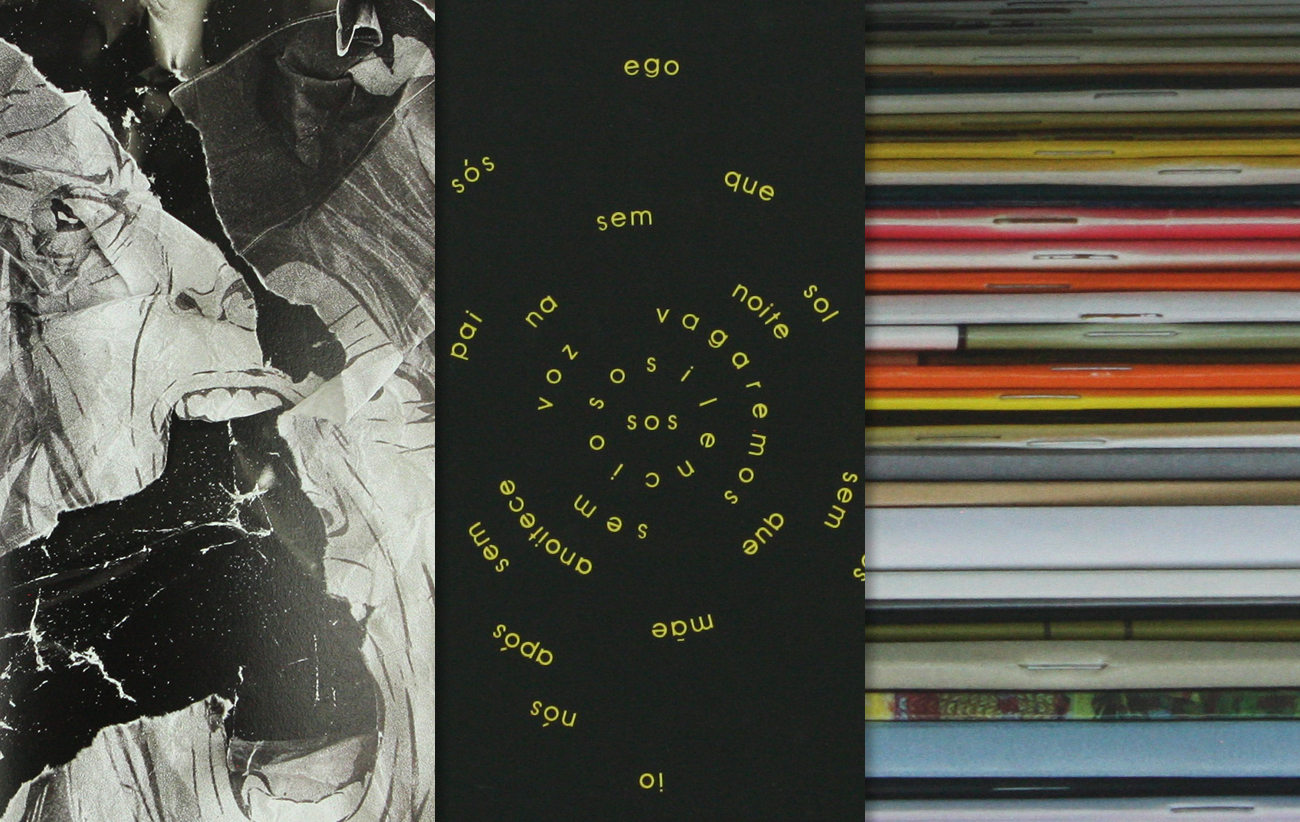
Here are three quite different books about visual culture and typography that crossed Eye’s desks in the past few months: the catalogue from Christian Marclay’s solo show in Paris; an anthology of concrete poetry; and the ISTD’s latest TypoGraphic, designed by Stephen Banham.
Christian Marclay, published by JRP Editions.
The practice of Swiss–American multimedia artist Christian Marclay has included collages, turntablism, performance and video, including his famous work The Clock (2010). The book, designed by Zak Group, is the catalogue to a solo exhibition held from 16 Nov 2022 – 27 Feb 2023 at Paris’s Centre Pompidou, which included Guitar Drag (2000) and the first showing of Doors (2022) but not The Clock.
The dust jacket of Christian Marclay is a laser-cut version of an image from Marclay’s photographic series Sound Holes (2007).
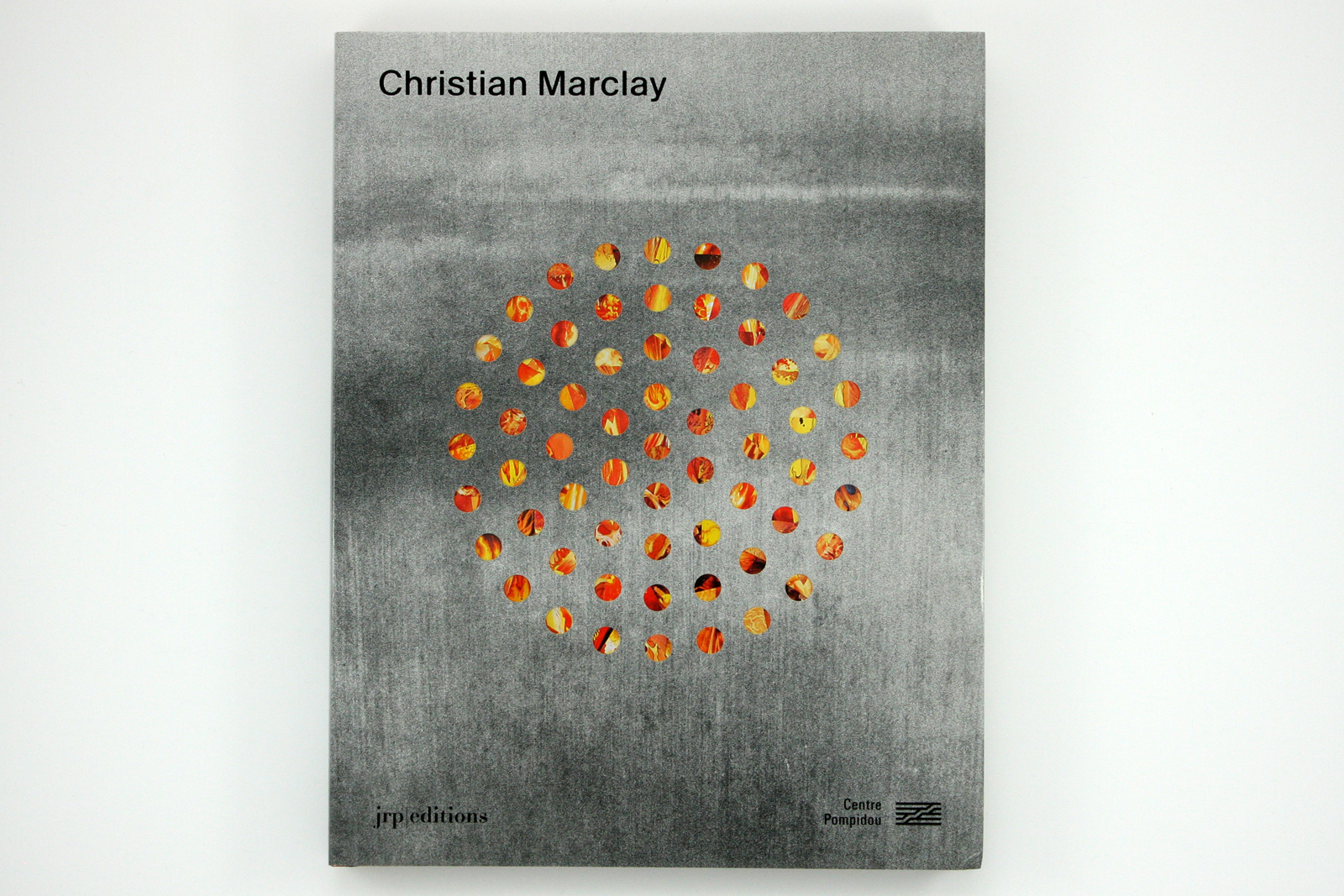
The publication features a transcribed conversation between Marclay and curator Jean-Pierre Criqui, several heavily footnoted essays, including ‘Ephemera’ by Catherine de Smet (who quotes Michael Twyman and Georges Perec), and a chronology with monochrome thumbnails. Christian Marclay is co-published by JRP|Editions and Éditions du Centre Pompidou.
Spread showing Untitled images from 2020.
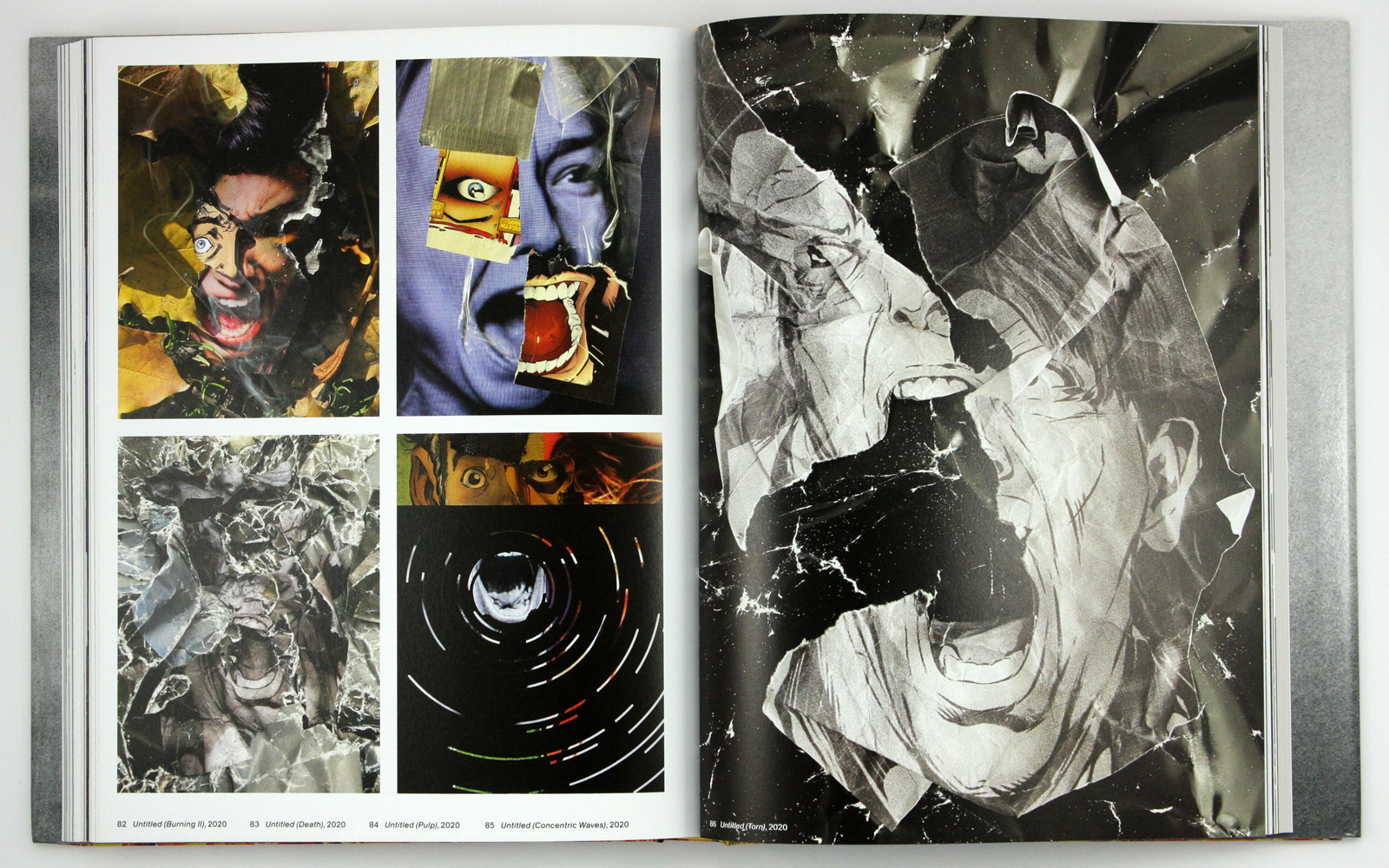
Pages from the graphic score No!, 2020, a sequence of collaged comic book panels, photos and other print ephemera with a musical bent. The smaller photographs at the foot document performances.
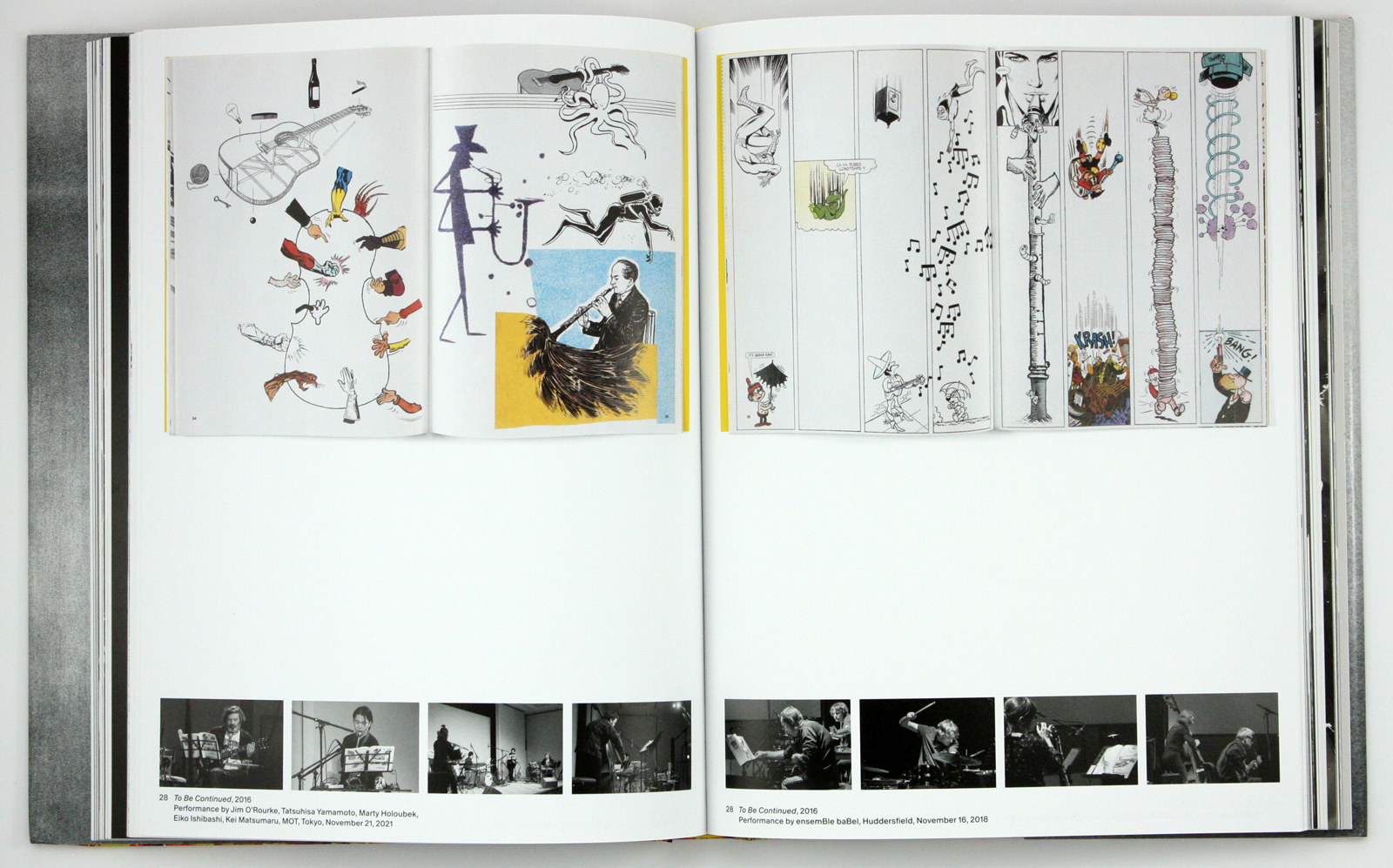
Read Henry Miles’s review of ‘Sonic Boom’, which included Marclay’s Guitar Drag (2000), in Eye 37.
Concrete Poetry: A 21st-Century Anthology, from Reaktion Books
Nancy Perloff’s book is rooted in a 2017 exhibition for the Getty Research Institute. Despite its title, the book (described by Perloff as a ‘revisionary anthology’) is a critical selection that focuses on prominent twentieth-century artists including Augusto De Campos (Brazil), Gerhard Rühm (Austria) and Ian Hamilton Finlay (Scotland).
Cover features ‘sos’ (1983) by Augusto de Campos, which the poet reconstructed as a digital animation in 2000.
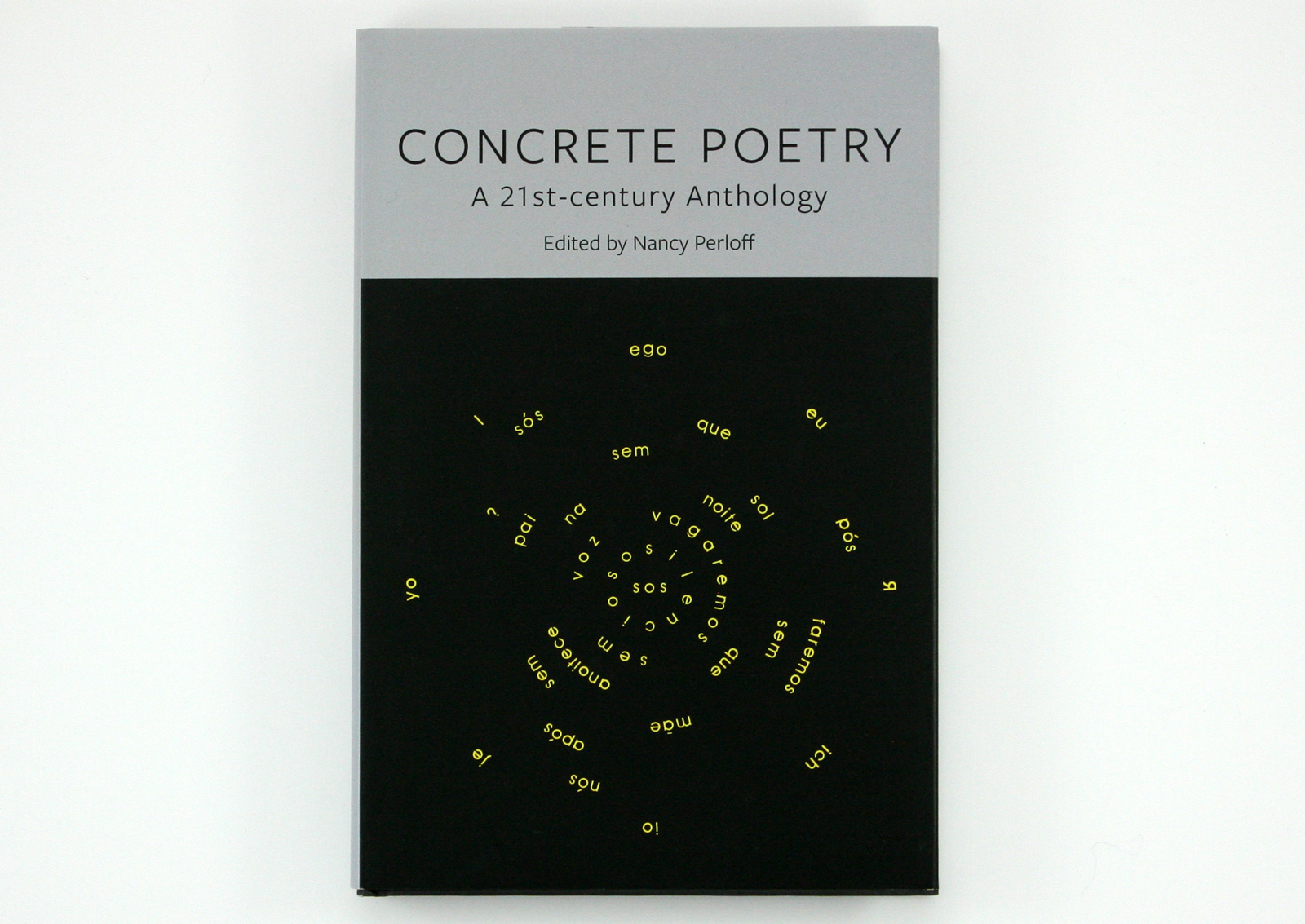
The 224-page hardback anthologises several concrete poets by country, including dsh (Dom Sylvester Houédard) and Bob Cobbing from the UK, and Dieter Roth (Switzerland). An appendix includes short biographies of practitioners such as Susan Howe and Hansjörg Mayer (though not Keith Armstrong). There is no index.
Spread from Concrete Poetry showing parts of the comb-bound One Hundred Sonnets by Carle Andre (left) and John Cage’s Lecture on Nothing.
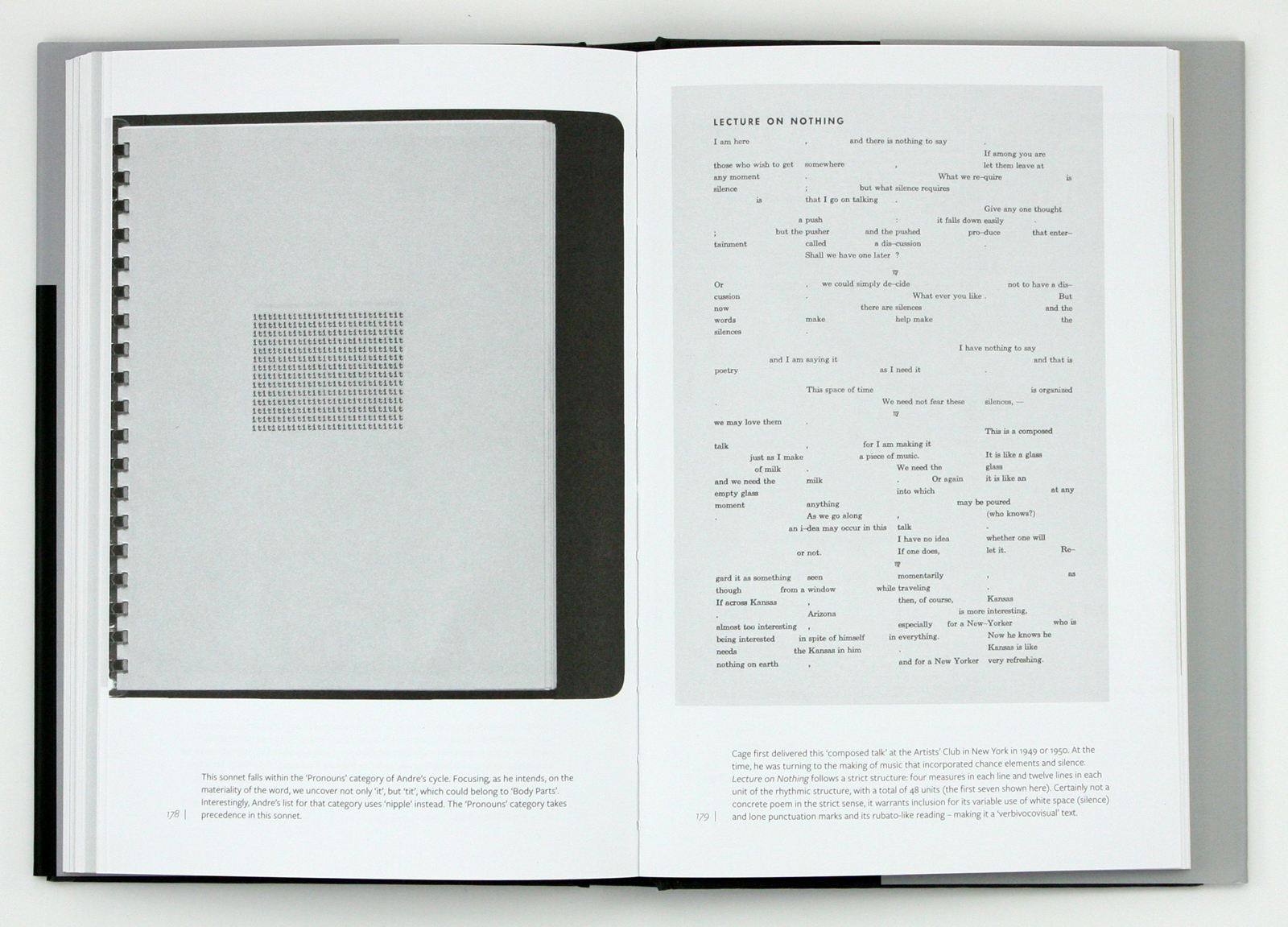
Work by Ian Hamilton Finlay. ‘Ajar’ (left) and ‘Sea-poppy 2’ from Fishing Boat Names, both 1968.
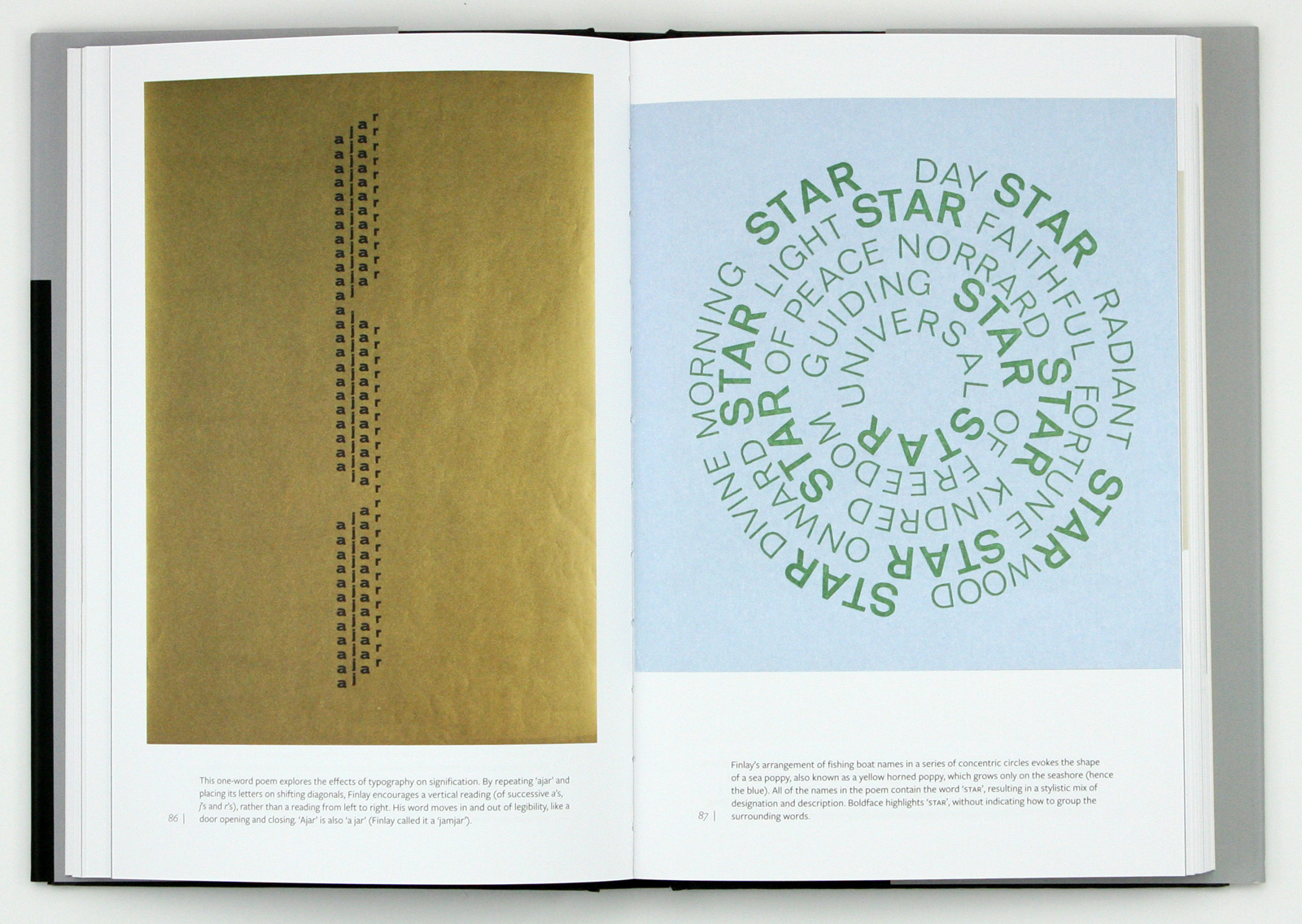
See also Peter Mayer’s articles ‘Visual prose’ (Eye 30) and ‘Concrete poems just are’ (Eye 20).
TypoGraphic 73: 72 point, published by ISTD.
Dust jacket (a folded poster designed by Rejane Dal Bello) and inner cover for TypoGraphic 73, ‘72 Point’, 2023.
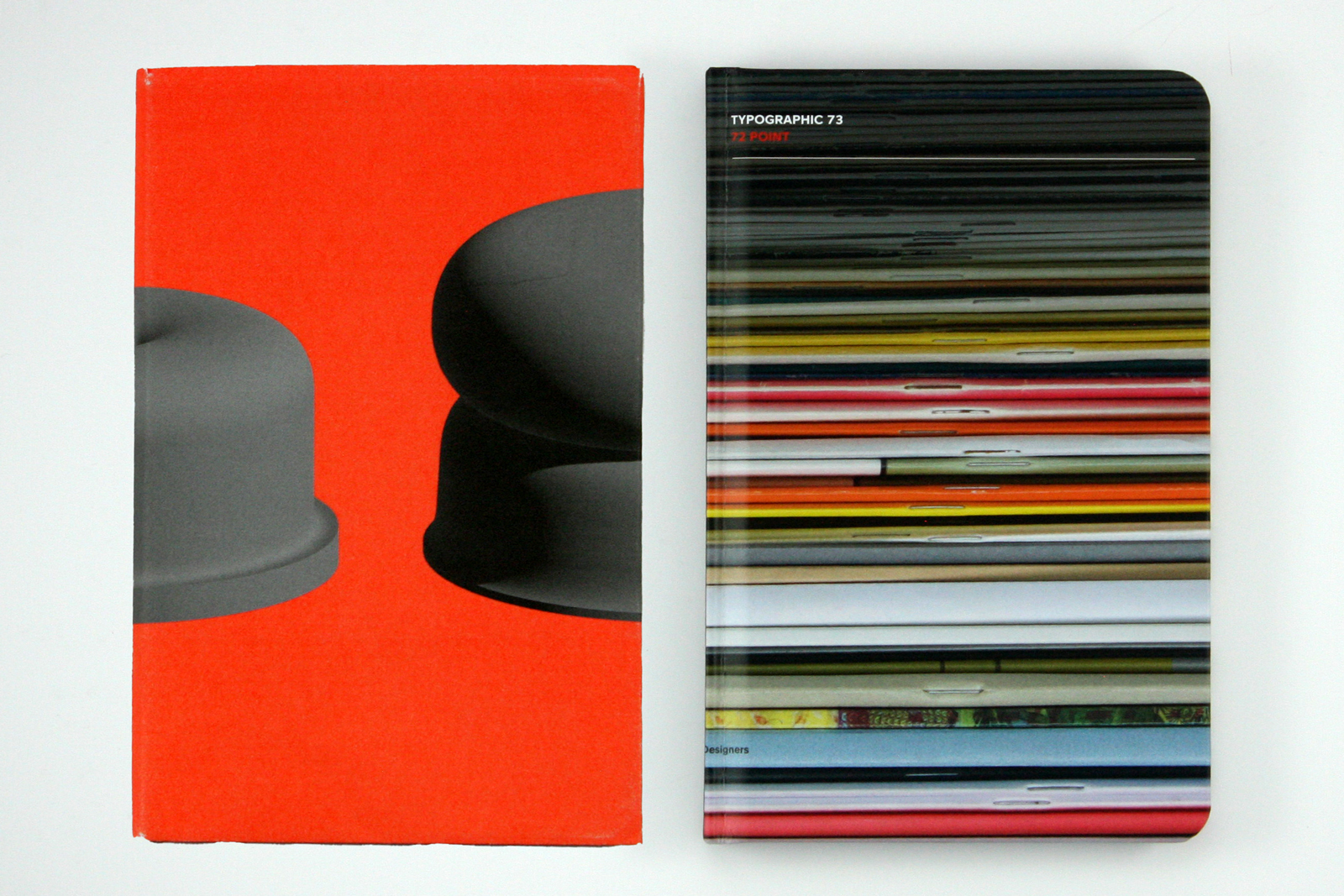
TypoGraphic is a design journal published since 1972 by the International Society of Typographic Designers (ISTD). More than half a century since its launch, number 73, designed by Stephen Banham, takes a reflective approach to journal’s history: the cover of this pocket-sized, casebound edition features a colourful array of spines of previous editions, and a major part of the small-format book is taken up with all the previous covers from 1 to 72. The opening section features a substantial essay, ‘Counterpoised (We need to talk about letterspacing)’, by Elizabeth Glickfeld, which describes the evolution of the journal and notes the ISTD’s roots in standards, fees and ‘the practising typographer’s perspective’.
Covers of TypoGraphic nos. 19 and 20 (1982).
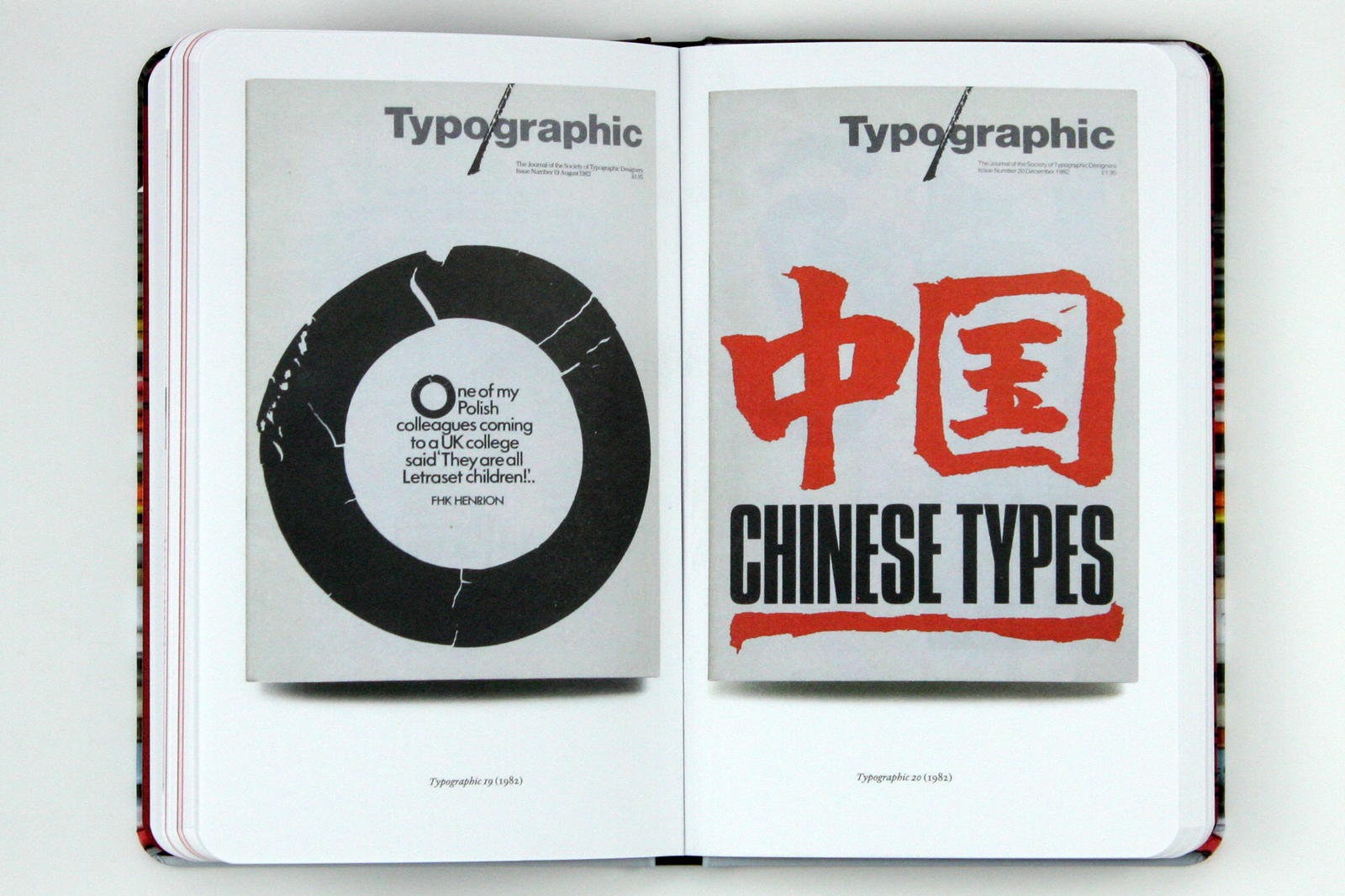
Covers of TypoGraphic nos. 27 and 28 (1985).
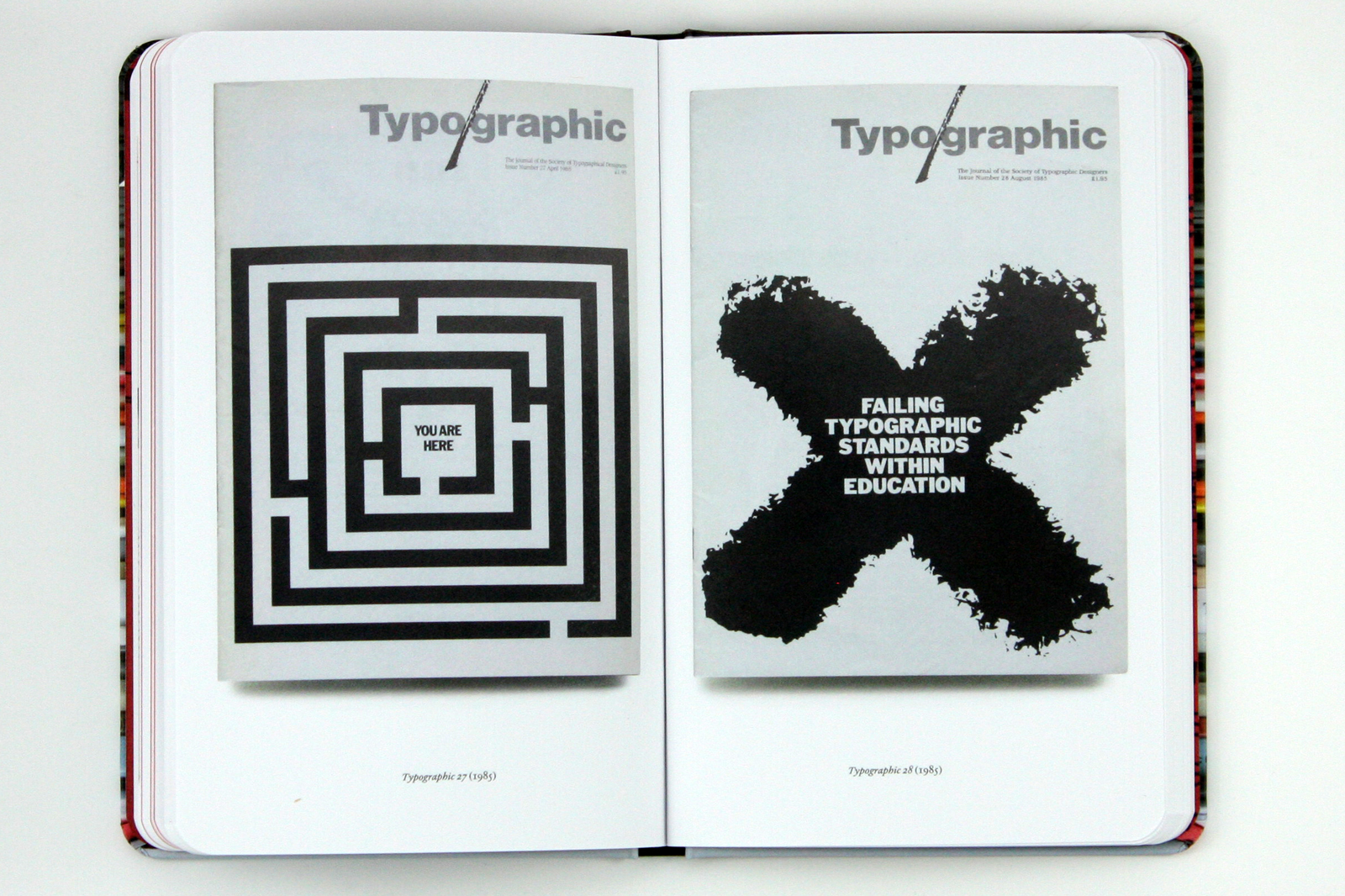
Read John D. Berry’s review of TypoGraphic Writing (2000) in Eye 45 and Barrie Tullett’s recent Eye blog post about the ISTD’s Student Assessment Scheme.
Eye is the world’s most beautiful and collectable graphic design journal, published for professional designers, students and anyone interested in critical, informed writing about graphic design and visual culture. It is available from all good design bookshops and online at the Eye shop, where you can buy subscriptions and single issues.
